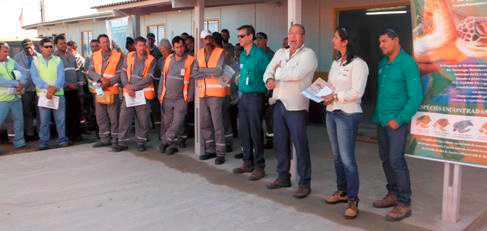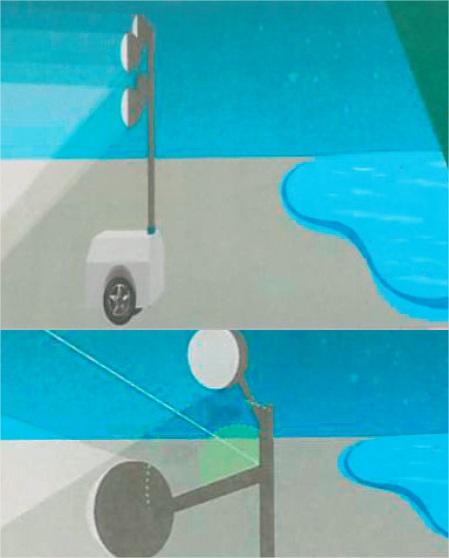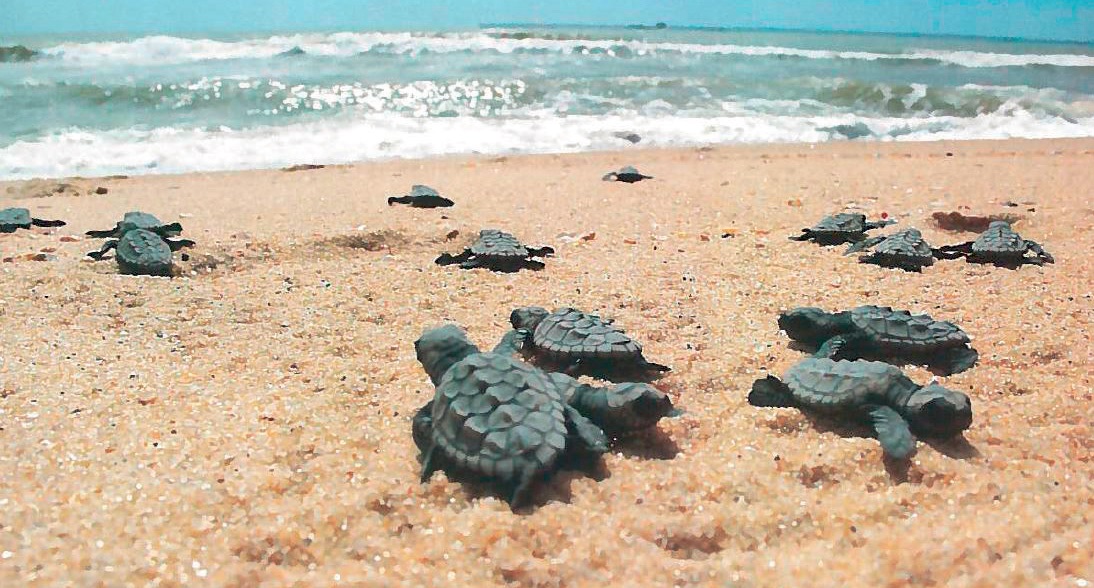Açu Port
Description of the Environmental Measure
Problem detected:
The Puerto de Açu site is located on the north side of the state of Rio de Janeiro in Brazil, which is a vital area for the reproduction, feeding and resting of sea turtles; the sea turtle is a protected species in danger of extinction. Of the 5 species of sea turtle that can be found along the coast of Brazil, the loggerhead sea turtle (Caretta caretta), is the one that uses the area around the Port of Açu to lay its eggs.
Artificial lighting on the site may cause photo pollution (aka luminous pollution) if it is badly designed, which entails a very harmful impact on the sea turtles' reproductive process. The turtles generally make their nests at night, and so if there is a lot of artificial lighting, the females will not come out of the water and will look for beaches more dimly lit, which can cause them to perish from exhaustion. Even if the eggs have been laid on the beach, excessive lighting can be a problem for the hatchlings, because as they make their way to the sea, they may become disorientated by the light and become easy prey for predators or die from dehydration.
Solutions adopted:
In order to help protect the specimens of loggerhead or green turtle present in the vicinity of the site, FCC-TARRIO TX has taken a series of steps to minimise the impact of artificial lighting in the area of Puerto de Açu.
The temporary floodlights on the site are orientated in such a way that they do not directly illuminate the sea and are at an angle of 30 degrees to the horizon in order to prevent excessive levels of hemispheric flow, dazzling or intrusive lighting. Both the installation of the lighting system itself and of any structure, whether fixed or mobile, which may receive indirect light, have been painted in dark matt colours. In addition, the lighting system is switched off whenever it is not in use for specific activities.
The works have been scheduled so that operations such as dredging, the removal of dredged materials and the construction of breakwaters are carried out exclusively between 7 am and 4 pm during the months of November, December and January.
In order to ensure that all personnel working on the site, both our own hires and sub-contracted personnel, are aware of the impact of their activities on the reproductive period of the sea turtles, and of the environmental determinants and measures implemented by the project management, talks have been given to raise their awareness and information leaflets have been published and distributed.
Results:
Concrete results of the measures implemented to minimise light pollution during the turtles' reproduction season are as yet unknown as so far execution of the work has not coincided with the turtles' hatching period. However, during the last reproductive season (September 2012 - March 2013) the TAMAR project, the aim of which is to identify and protect sea turtles as they hatch in the vicinity of the Açu Port Complex, identified 28,115 turtle eggs, from which 19,379 hatchlings emerged that succeeded in reaching the open sea to begin their life cycle











